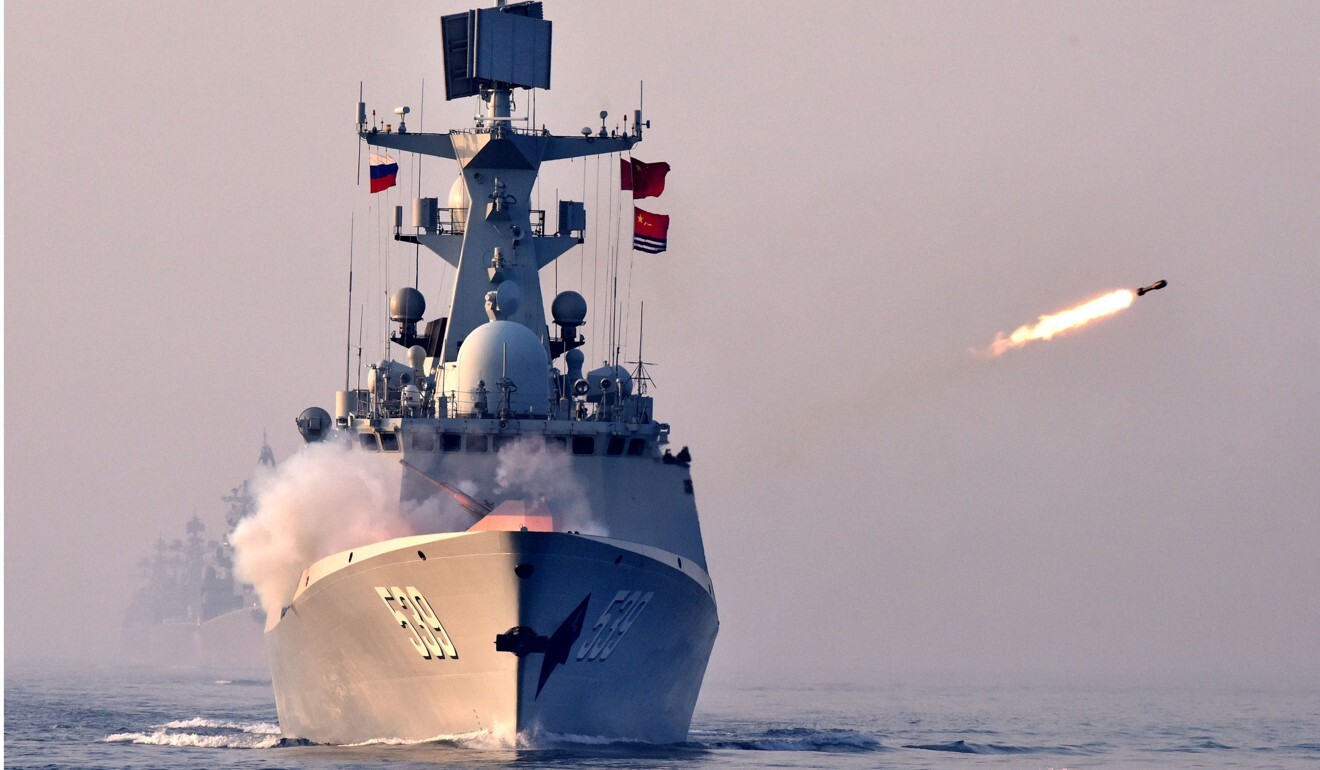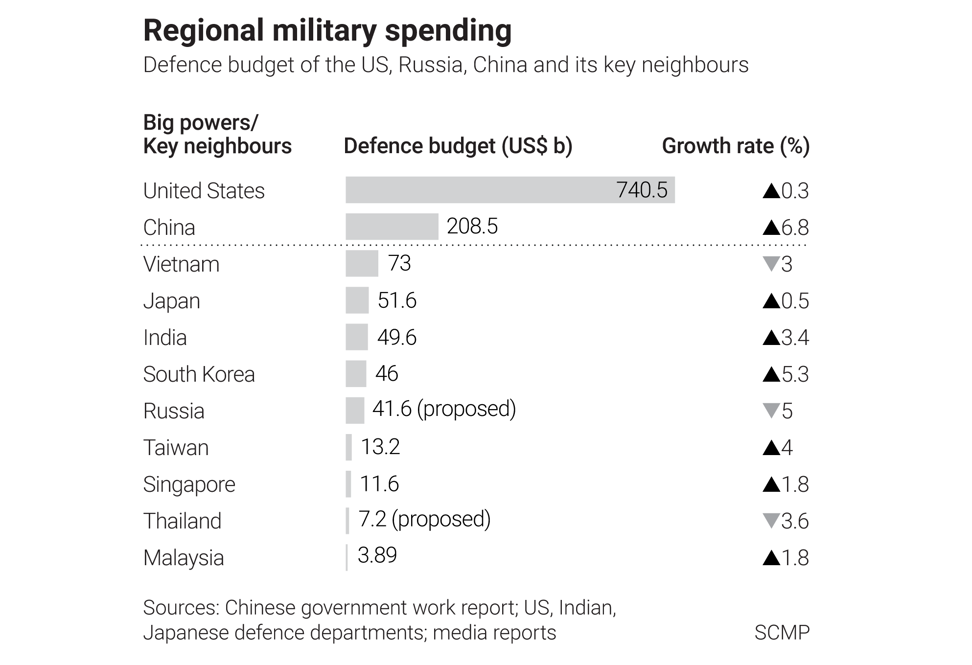
China’s 6.8 per cent rise in military spending expected to stoke unease in region
- Defence funding will reach US$209 billion in 2021, and Premier Li Keqiang says PLA will get a training boost
- Analysts say it reflects strong economic recovery and increase will be concerning for neighbours
While the budget increase is just 0.2 of a percentage point more than last year’s growth, it is the biggest expansion in military spending in Asia.
The defence ministry said earlier that one-third of the budget would be spent on construction projects for military exercises, with the rest for weapons, equipment and salaries.
Key takeaways from the opening of the National People’s Congress
Many Asian nations have scaled back defence spending, with Vietnam and Thailand reducing theirs to increases of 3 per cent and 3.6 per cent for 2021, respectively.
Last month, New Delhi announced defence spending of US$49.6 billion, a 3.4 per cent rise. Nearly 19 per cent of that budget will go to weapons purchases, according to the Indian Army.
In Japan, the government approved a record defence budget of US$51.6 billion for this year, up 0.5 per cent, as it seeks to introduce longer-range missiles amid security challenges from China.
The PLA’s budget is nearly 16 times that of Taiwan’s military, which is expected to receive US$13.2 billion this year – up 4 per cent from 2020.
Observers said China’s expanding defence budget was concerning for the region.
“Obviously its large expenditure on military build-up, including the recent increase, is a matter of concern for India given China’s hostile moves against India recently and in the past,” said Yogesh Gupta, a former Indian ambassador to Denmark and a specialist in China-India relations.
Rajeev Ranjan Chaturvedy, an adjunct senior associate fellow with Asian Confluence in Shillong, India, said the Indian military would focus on upgrading its weapons and developing defence partnerships, particularly with the US and France.
“India is way behind and is not looking to match numbers, rather precision and cutting-edge technologies are the key measures,” he said.
US Senator Jim Inhofe of Oklahoma, said the budget increase could help China narrow the gap with the US. He said the US defence department had lost US$400 billion in buying power under sequestration since 2011.
“If America wants to stand up to China, it’s going to take not just working with our allies and partners, but real investment of our own – into innovative capabilities and the forward posture that will send a strong message of deterrence.”
Analysts also said China’s defence budget growth reflected its strong economic recovery.
“China can still afford 6.8 per cent when other countries may have to bear with stagnation or cutbacks on defence spending in order to prioritise their Covid-19 response,” said Collin Koh, a research fellow in the maritime security programme at Nanyang Technological University in Singapore.
“Neighbours will at least view China’s defence spending increase with a sense of uncertainty, while those that have direct security issues with Beijing will look at it with no small amount of unease.”

In recent years, the PLA has focused on improving combat readiness and developing new weapons. This year it will launch its second domestically built aircraft carrier and four new stealth destroyers are also expected to enter service.
But security experts said the moderate growth in defence spending indicated that the Chinese leadership did not see an imminent risk of conflict.
Lu Li-Shih, a former instructor at Taiwan’s Naval Academy in Kaohsiung, said the PLA was still going through a modernisation process, including development and training for new aircraft like its long-range stealth bomber and its new amphibious assault ship. “The PLA would only take action [invading Taiwan] when all the new weapon systems had been in service for more than two years, when the whole military [could play a role in] modern warfare,” he said.
Beijing claims it keeps military spending to about 1.3 per cent of its annual GDP, but it has long been criticised for a lack of transparency in its defence budgets and for omitting important items.
Andrei Chang, editor-in-chief of the Canada-based Kanwa Defence Review, said there was a lot of hidden spending that was not included in the official budget.
“China has been doing research and development for many new weapon systems, including their new and next-generation aircraft carriers, intercontinental ballistic missiles and other cutting-edge software, but none of these costs are counted in the budget,” he said.
Drew Thompson, a former US Defence Department official responsible for managing bilateral relations with Beijing and Taipei, noted that the budget growth was similar to previous years.
“Remember, the absolute increase – the numerator – is about the same as the increase in past years. As the PLA’s budget grows each year, the denominator grows, making the per cent increase lower, even though the amount added each year is about the same,” he said.


